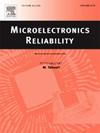机器学习模型在热循环下焊点可靠性预测中的应用
IF 1.9
4区 工程技术
Q3 ENGINEERING, ELECTRICAL & ELECTRONIC
引用次数: 0
摘要
本研究将机器学习(ML)方法与Optuna超参数优化相结合,用于多层片式电容器焊点蠕变应变的预测。在有限元模拟中,材料性能、几何形状和热载荷条件发生了变化。评估的机器学习模型包括随机森林、梯度增强、支持向量回归和人工神经网络。结果表明,预测准确率为96%,特别是对于SVR和ANN。随着数据规模的增加,模型的性能显著提高,最多可模拟600次左右。在特征和超参数重要性分析中,焊料隔离高度和组件长度对人工神经网络的预测影响最大,其中学习率是关键的超参数,而对于支持向量回归,正则化参数或核函数是最关键的。本文章由计算机程序翻译,如有差异,请以英文原文为准。
Application of machine learning modeling for predicting the reliability of solder joints under thermal cycling
In this study, Machine Learning (ML) methods combined with Optuna hyperparameter optimization were investigated to predict creep strain in solder joints of multilayer chip capacitors. Material properties, geometry and thermal loading conditions were varied in simulations using Finite Element Modeling. Evaluated ML models included Random Forest, Gradient Boosting, Support Vector Regression (SVR) and Artificial Neural Network (ANN). The results demonstrated a prediction accuracy of 96%, particularly for SVR and ANN. The model performance significantly improved with increasing data size up to around 600 simulations. In the feature and hyperparameter importance analysis, solder stand-off height and component length most influenced ANN predictions, with learning rate being the key hyperparameter, while for SVR, the regularization parameter or kernel function was most critical.
求助全文
通过发布文献求助,成功后即可免费获取论文全文。
去求助
来源期刊

Microelectronics Reliability
工程技术-工程:电子与电气
CiteScore
3.30
自引率
12.50%
发文量
342
审稿时长
68 days
期刊介绍:
Microelectronics Reliability, is dedicated to disseminating the latest research results and related information on the reliability of microelectronic devices, circuits and systems, from materials, process and manufacturing, to design, testing and operation. The coverage of the journal includes the following topics: measurement, understanding and analysis; evaluation and prediction; modelling and simulation; methodologies and mitigation. Papers which combine reliability with other important areas of microelectronics engineering, such as design, fabrication, integration, testing, and field operation will also be welcome, and practical papers reporting case studies in the field and specific application domains are particularly encouraged.
Most accepted papers will be published as Research Papers, describing significant advances and completed work. Papers reviewing important developing topics of general interest may be accepted for publication as Review Papers. Urgent communications of a more preliminary nature and short reports on completed practical work of current interest may be considered for publication as Research Notes. All contributions are subject to peer review by leading experts in the field.
 求助内容:
求助内容: 应助结果提醒方式:
应助结果提醒方式:


